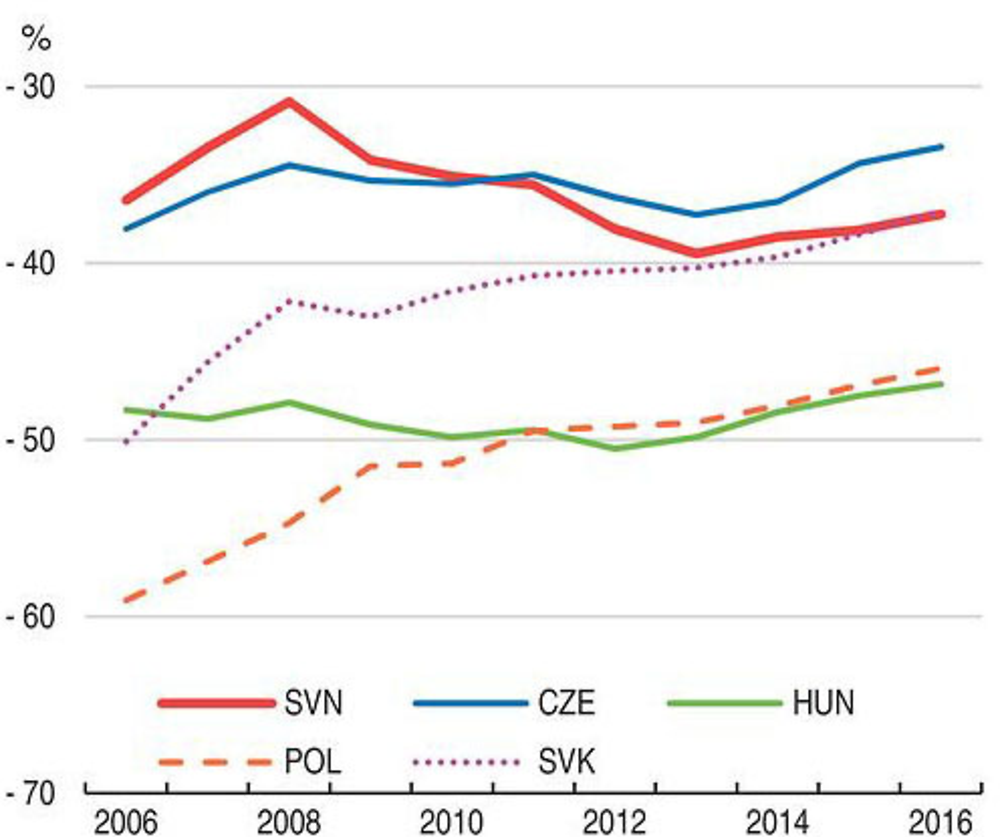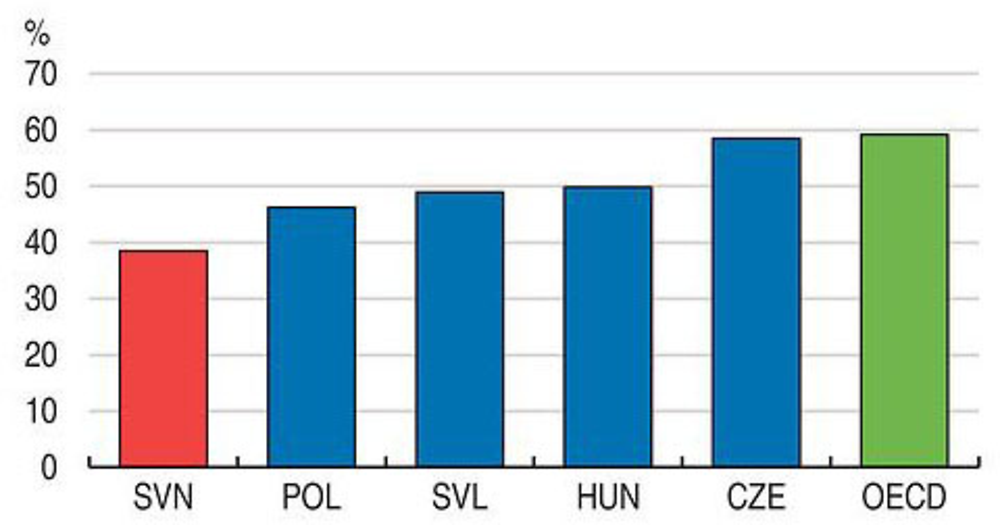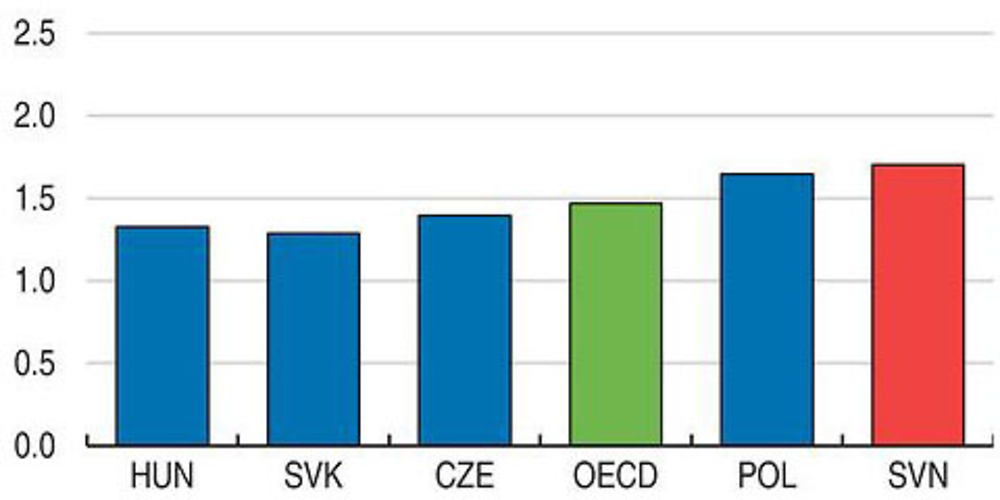Executive summary
Slovenia’s recovery is strengthening

← 1. See footnote 1 in Figure 9.
Source: OECD Analytical Database.
Growth has picked up to a pace exceeding the EU15 average, thanks to recent structural reforms, business restructuring, supportive monetary conditions and improved export markets. Lower unemployment and higher real incomes are underpinning consumption. Business investment is rising, although it remains low relative to GDP. Public debt and non-performing loans are being reduced from high levels. However, Slovenia faces several socioeconomic challenges, particularly rapid population ageing. The government’s National Development Strategy 2030 aims to improve the well-being of its people through strong, inclusive and sustainable growth in the context of the United Nations’ Sustainable Development Goals.
Investing in skills would raise incomes and make growth more inclusive

Source: OECD, Labour Force Survey – Sex and Age composition database.
Investment in human capital is important to raise productivity and to ensure that the benefits of the recovery reach everyone in society. Persistent long-term unemployment and low employment of older workers, combined with an ageing population, magnify the importance of achieving a more inclusive labour market. Workers need to maintain their skills to find and retain well paid jobs, and many of the unemployed have to be reskilled to gain a foothold on the labour market. A number of policies are required to meet the challenge of preparing people for successful careers in competitive and innovative firms that are globally integrated, including training of the jobless and strengthening vocational and university education.
Attracting investment and fostering competitive firms

Source: OECD PMR indicators database.
More capital would raise productivity and living standards. Reducing high regulatory barriers would make Slovenia more attractive to domestic and foreign investors. This could be achieved by strengthening inter-agency co-ordination, regulatory impact assessments and the competition authority. Reducing the wide scope of the numerous state-owned enterprises would foster competition, particularly in network sectors. More competitive markets would lower prices, expand consumer choice and stimulate innovation with benefits for well-being and economic growth.
